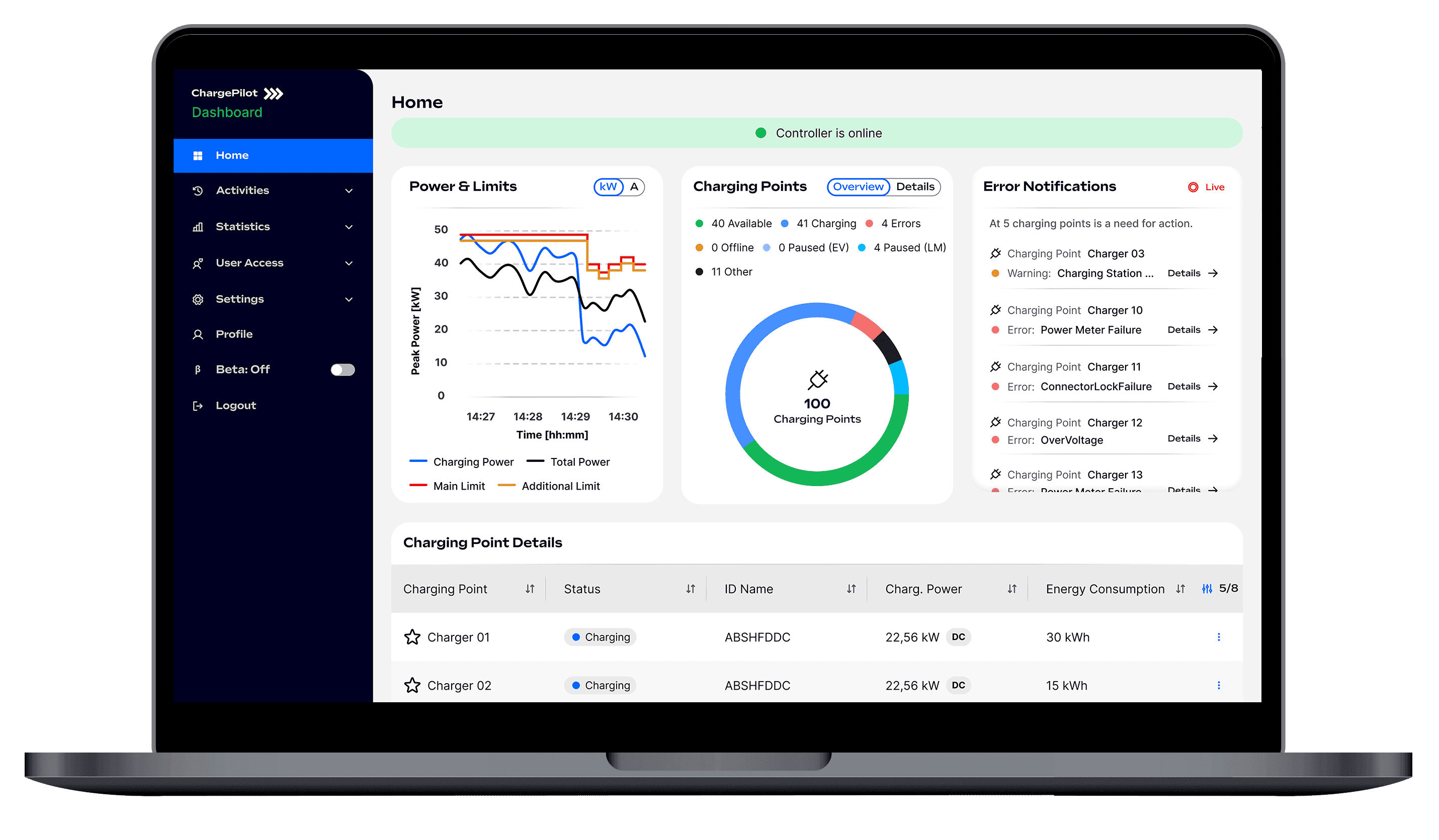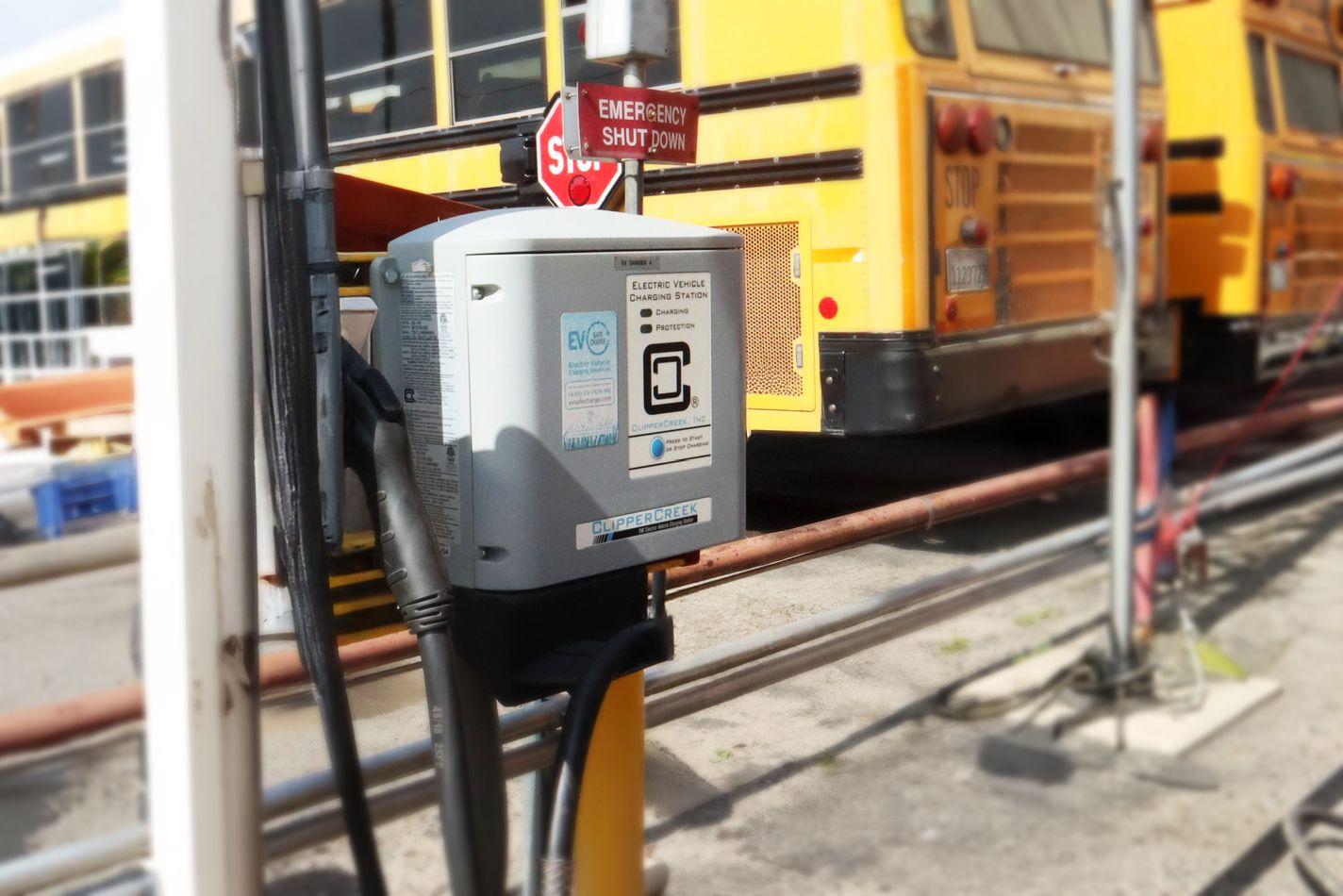Gen 1 EV Charger installed at a school bus fleet depot. Credit: The Mobility House
Is your old charging infrastructure holding you back?
For fleet managers and EV infrastructure planners, this is the question that should guide your operations. If you’re grappling with the limitations of Generation 1 non-OCPP (Open Charge Point Protocol) or chargers from a vertically integrated charge point operator (CPO), you’re not alone. Outdated technology, poor interoperability, and proprietary systems present significant hurdles for those aiming to optimize and expand their EV charging infrastructure.
The solution? A strategic move to modern, OCPP-compliant systems that prioritize scalability, flexibility, and cost-saving efficiency. Here’s everything you need to know to upgrade your charging solutions and future-proof your fleet.
Understanding Gen 1 Non-OCPP chargers
Before we cover how to scale, it’s important to first identify the type of chargers installed at early EV adoption sites. Gen 1 chargers refer to early EV charging units, primarily developed before 2015. These chargers are typically Level 1 or Level 2 systems, often limited in functionality due to non-networked designs. Without connectivity to cellular networks, Wi-Fi, or smart features, they lack the essential hardware and software for advanced fleet requirements like load management or long-term interoperability.
Key characteristics of Gen 1 chargers:
- Outdated hardware with limited or no software updates
- Often proprietary, locking users into a single product ecosystem
- Lacking smart charging or remote monitoring features
- Examples include early versions of ClipperCreek LCS-25, ChargePoint CT1000, and Blink Level 2 chargers
While these chargers served their purpose at a time when fleets were small and EV adoption rates were nascent, they fall short in meeting the demands of today’s advanced EV fleets.

ChargePilot® interoperable ecosystem, by The Mobility House
Why interoperability matters
When managing an electric fleet, one of the most critical factors for success is interoperability. Simply put, interoperability ensures seamless communication between your chargers, vehicles, and charge management software, regardless of brand. Charging solutions from vertically integrated charge point operators (CPO) often lack this flexibility, locking you into proprietary systems that don’t play well with others.
It’s time to upgrade to OCPP-compliant solutions—not just to improve functionality but to address the challenges that come with proprietary systems.
Common challenges with vertically integrated chargers:
Limited compatibility
Non-OCPP chargers often only integrate with proprietary software, leaving little room for expanding site operations with new hardware or communication with third-party platforms.
Higher costs and vendor lock-in
Relying on a single vendor limits flexibility and often results in expensive upgrades or replacements when scaling becomes necessary.
Time-consuming manual management
Without seamless cross-platform communication, managing charging operations becomes labor-intensive and error-prone.
Reduced resilience in a changing market
Should a proprietary vendor discontinue their product or exit the market, organizations may face a costly “rip-and-replace” scenario for their entire infrastructure.
The smart move to OCPP-compliant systems
The shift to interoperability and OCPP-compliant chargers aims to eliminate the issues caused by proprietary systems, empowering fleet owners with flexibility, scalability, and robust system integration. OCPP acts as the universal language within EV infrastructure, enabling chargers, vehicles, and software tools to communicate seamlessly, regardless of manufacturer.
Benefits of OCPP-compliant systems:
- Mix and match hardware
With an open standard, you can choose chargers from multiple manufacturers, offering greater flexibility tailored to your budget and needs.
- Integrate smart charging software
OCPP makes it possible to deploy tools that optimize charging schedules, reduce demand charges, improve energy efficiency, and prioritize operational uptime.
- Future-proof your fleet
Easily upgrade or scale as your operations grow and as new EV models and industry technologies emerge.
- Reduce vendor reliance
No more being locked into one ecosystem. OCPP gives you the freedom to switch or update systems without entirely overhauling your setup.

ChargePilot® charge management system dashboard, by The Mobility House
A smarter solution
Transitioning to an OCPP-compliant setup need not be overwhelming. Industry-leading tools like ChargePilot by The Mobility House simplify the process of upgrading and managing enterprise-scale EV infrastructure with advanced interoperability features.

Charge smart – today and into the future
ChargePilot® is the smart charging and energy management system that charges your electric vehicles in the most reliable, easy and affordable way possible.
What makes ChargePilot® your ideal partner?
Hardware-agnostic flexibility
ChargePilot® allows you to manage chargers from multiple manufacturers without being tethered to any particular brand.
Powerful energy optimization
Designed for efficient energy use, ChargePilot® integrates load management technology to ensure cost-effective, uninterrupted fleet charging.
Scalable and customizable functionality
With easy integration of new chargers or fleet vehicles, ChargePilot® adapts as your operations evolve.
Industry-proven success
Trusted globally, ChargePilot® has a proven record of streamlining operations and lowering fleet costs.
Pioneering forward
Transitioning to interoperable OCPP chargers paired with smart charge management solutions like ChargePilot® isn’t just a technical upgrade; it’s a strategic advantage that sets your fleet up for scalability, cost savings, and long-term success.
Are you ready to leave outdated, Gen 1 charging solutions in the rearview mirror? Request a demo today to explore how ChargePilot® can revolutionize your fleet charging operations.

